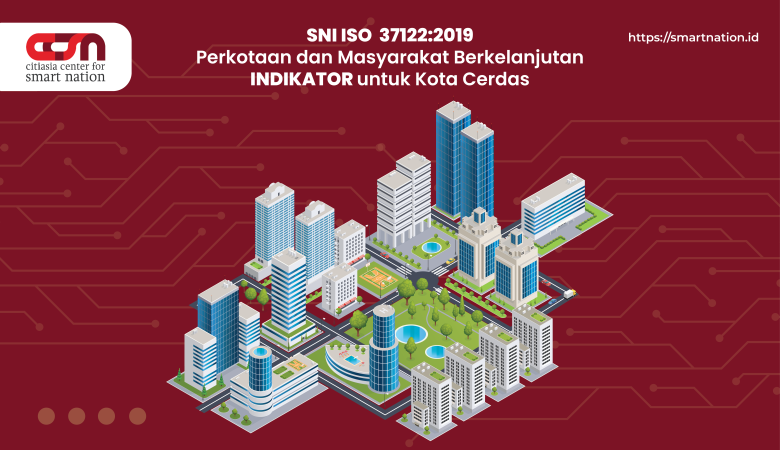
However, it is helpful to start with the definition of “smart city” before such a review. The term has lost its meaning today due to its frequent use and abuse in recent years. Often used to cover a variety of applications. From Citizen Engagement to Zipcar, from Open Data to Airbnb, from Smart Bike to Broadband, you can hear people talking and writing about “smart cities.”
Where do you start the definition? The Internet has indeed changed our lives in the last 20 years. Thanks to a connected network that covers most people on the planet today, all of our ways of working, meeting, mating, etc. are very different from what they were decades ago. We are at the beginning of a new technological revolution today. The Internet is becoming the Internet of Things, finding its way in the physical space, the space of our city. It opens the door to a new world of applications that can span many domains, like the first wave of the Internet.
What should the government do?

What should the government do in the above technical context? In recent years, the first wave of smart city applications has followed technical excitement. Some of South Korea’s early experiments, such as Matsushima City, were developed by Cisco and others using top-down guidelines that support the use of technology. Similarly to Rio de Janeiro launched the Integrated Command and Control Center was developed by IBM in 2010. This is a large control room in a city that collects real-time information from cameras and countless sensors contained in the city structure.
Such an approach has revealed many shortcomings, especially the lack of public involvement. It’s as if they think of the city as just an “open-air computer.” These approaches have sparked some backlash in research and academia. More interesting lessons could come from the United States, which focuses on developing a comprehensive innovation ecosystem for the Internet of Things. Many initiatives promote digital and physical spaces so that people can come together and collaborate on innovation in cities and citizens.
In the United States, the general idea of smart urban space is of central importance to the successful startups of the current generation. One of the latest examples is Uber. This is a smartphone app that anyone can use to call a taxi or become a driver. The company’s business is polarized, with Uber being the subject of protests and strikes around the world (mainly in Europe), but recently valued at $ 50 billion in the stratosphere.
Beyond Uber, Nest Learning Thermostat, Airbnb’s apartment sharing website, Apple’s recently announced Home Operating System proves a new frontier for digital information when it exists in physical space. A similar approach to the promises to revolutionize most aspects of today’s urban life, from commuting to energy expenditure to personal health. That’s why they are enthusiastically supported by venture capital funds.
In this situation, governments can use their money to develop an organic innovation ecosystem for smart cities similar to those growing in the United States. It’s more about bottom-up innovation than top-down schemes. This must be aimed at creating and facilitating a regulatory framework that enables the prosperity of innovation beyond the support of traditional incubators. Given the legal hurdles that plague applications like Uber and Airbnb, this support is urgently needed. As the draft Directive suggests, project funding will help planners more impact the community by improving waste management, improving the quality of life in the community, and supporting citizens’ involvement in the community. It can be used for any purpose, from developing systems that help you make accurate predictions. development.
This does not mean that the government should take a completely tolerant approach to urban development. The government certainly has an important role to play. This includes supporting academic research and facilitating applications in areas that are less attractive to venture capital. The public sector can also encourage the use of open platforms and standards in such projects. This will accelerate adoption in cities around the world. Comprehensive goals should always be citizen-oriented. They are in the best position to decide how to transform their cities and make decisions that affect their lives.
The benefits of not rushing in

In retrospect, perhaps this wasn’t such a bad thing. It’s now widely recognized that, despite the rhetoric of technology vendors, much of the early investment in smart cities failed to demonstrate significant benefits to cities and their citizens.
This period of “Smart Cities 1.0” investment was dominated by relatively small or experimental prototypes involving separate systems and infrastructures. Think of a Cisco smart light trial, combined with a smart parking app. These have been small, interesting prototypes, but not necessarily generating the efficiencies and value sometimes claimed for smart cities.
Would you like to reinvent the government as a “platform”?
For those of us who enjoy tech vendors talking about data sharing and open innovation, that all seems great. We hope that some of these considerations will help fund pilots and prototypes under the smart city and suburban programs. But it should be remembered here that perhaps the most radical thing in this new stage is not the technology itself, but the way to relocate the role of the state.
The government is increasingly standing as a “platform” for a wide range of innovations in data services. Australia’s digital transformation offices are adopting this idea of services that are “built on a common (data) core.” Many other institutions follow suit. But if information-dependent cities make a difference, we need to think about how to use these new platforms to address the unique governance challenges facing our cities.
Australian Cities is a patchwork of municipal areas overlaid with state and federal jurisdictions covering transportation, education, health, and more. No single institution “runs” the city. Many of them even work in opposition to each other. Patchwork while it may not be possible to solve the unique challenges of local governments, it can encourage city governments to invest in data-rich platforms to facilitate data-driven collaboration and services that benefit the city. increase.
Responsive Governance is Key

Smart city elements include many innovations and the willingness to break new ground. Today’s Internet of Things technology, data analytics platforms, and sensor-based services ensure new ways to understand, visualize, and analyze many of the nature and scope of our most pressing urban challenges. To do.
But solving challenges such as waste management, quality of life and land use planning requires more than just investment in technology, data collection services, and digital prototypes. The solution also relies on effective long-term partnerships inside and outside the government. Digital infrastructure is undoubtedly important, but it is the city government that invests in new ways of collaboration and coin innovation that ultimately guides the way cities deliver the smarter and more responsive services they need.
Author: Diva Maharani | Illustrator: Akbar Nugroho
Sources:
- https://cities.dpmc.gov.au/smart-cities-program
- https://www.smh.com.au/technology/australian-cities-in-no-hurry-to-become-smart-20141027-11cbnt.html
- https://www.cityofadelaide.com.au/business/support-resources/city-of-adelaide-studio/smart-lighting-trial-project/
- https://www.cmtedd.act.gov.au/smartparking/home
- https://theurbantechnologist.com/2016/02/01/why-smart-cities-still-arent-working-for-us-after-20-years-and-how-we-can-fix-them/
- https://thefifthestate.com.au/columns/spinifex/a-minister-for-cities-great-now-for-a-smart-cities-discussion/
- https://guides.service.gov.au/
- https://theconversation.com/explainer-the-internet-of-things-16542
- https://en.wikipedia.org/wiki/Zipcar
- https://theconversation.com/the-future-will-be-built-on-open-data-heres-why-52785
- https://theconversation.com/airbnb-social-media-and-the-quest-for-the-authentic-urban-experience-48889
- https://www.bbc.com/news/technology-23757738
- https://theconversation.com/airbnb-uber-opponents-build-barriers-rather-than-compete-asking-consumers-to-pay-price-39282









Leave a Reply